The Flame Acanthus is a deciduous Texas native shrub best known for its red tubular flowers that are beloved by hummingbirds. This might be why it’s also known as the hummingbird bush. The Flame Acanthus naturally grows on the rocky slopes of Texas and in the proper conditions it can spread quite easily.
I’ve had Flame Acanthus in my landscape for over three years, and it’s an excellent, low-maintenance plant that thrives in hot, dry direct sunlight.
It seems like the more sun, the more heat you give it, the more blooms you get. Personally, I think if you can grow it, you skip the hummingbird feeder and just put one of these in the ground.
Quick Facts
- Common Name(s): Hummingbird Bush, Wright Acanthus, Cohilla Honeysuckle
- Latin Name: Anisacanthus quadrifidus var., Anisacanthus wrightii (ah-nee-sah-KAN-thus kwah-DRIF-ed-dus variety RITE-ee-eye)
- Height: 3- 5 feet tall
- Soil Conditions: This plant likes rich soils but can grow in heavy clay soils and shallow-rocky soil types. The soil must be well-drained, preferably with some sand or limestone.
- Water: Low; extremely drought tolerant once established.
- Light: Full sun
- Family: Acanthaceae (Acanthus Family)
Distribution - Where Is Flame Acanthus Native?
The Flame Acanthus is native to the West and South-Central Texas. It's much more popular in landscapes than in natural areas, although, you’ll find it along arroyos, canyons, even in dry stream beds of West Texas at 3000’ to 5000’.
It grows in the rocky banks and flood plains of the Edwards Plateau. They’re along the roadsides, streams, and open woodlands of Trans-Pecos and Nothern Mexico.
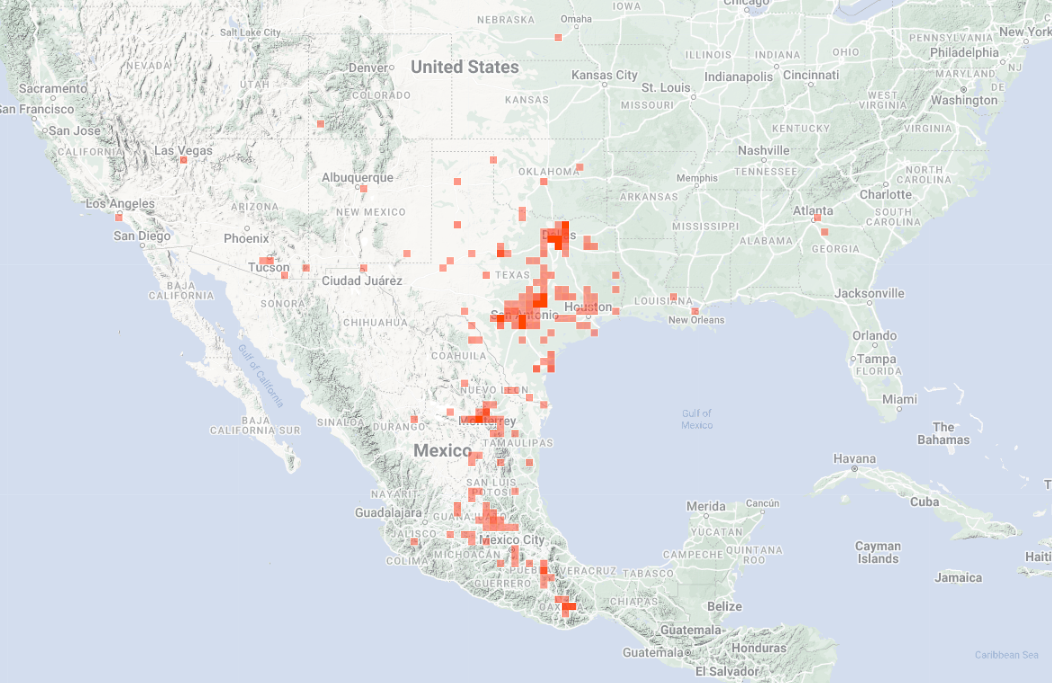
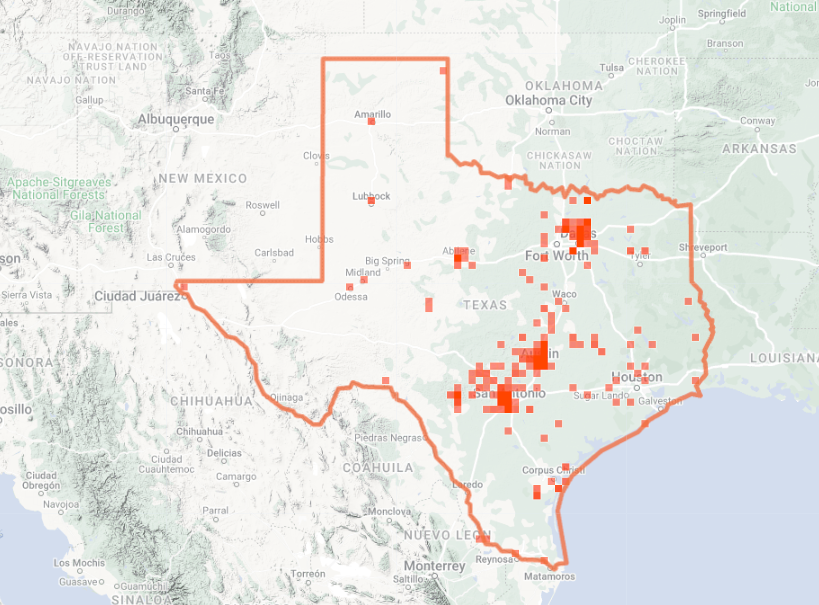
Source: iNaturalist
The Benefits of Flame Acanthus
Below are some reasons to grow the Flame Acanthus in your Texas native landscape (and why I love it in mine):
For Your Landscape
- Showy Flowers: Flowers of Flame Acanthus can come in vibrant coral, red, and orange. They bring beautiful pops of color to your garden.
- Attract Hummingbirds & Butterflies: It's really not long after our Flame Acanthus blooms that we start to see hummingbirds. There's no reason we'd need a feeder!
- Loves Heat & Direct Sun: In Texas, you relish finding your plants that not only survive in the heat and direct sun, but love it. Flame Acanthus is one of those. Our best blooming plant is the one we've planted in the hottest, driest conditions!
- Spreads & Transplants Easily: This can be a con if you want a plant that is controlled, but we have a lot of space to fill. Now that we've purchased 4 Flame Acanthus plants, there's no reason to buy another. They shoot their seeds out rather prolifically, so, in spring when we find new plants we can decide to transplant them to another portion of our property, or, give them away!
- Low Water Use: Once established, this plant requires no supplemental water.
- Low Maintenance: While Flame Acanthus can be cut back to promote more compact growth, it doesn't need to be. I currently prefer the Flame Acanthus plant most that we didn't cut back in winter.
- Deer Resistant: Deer aren't an issue for us on our property, however, for those who have an issue, Flame Acanthus is apparently highly deer resistant.
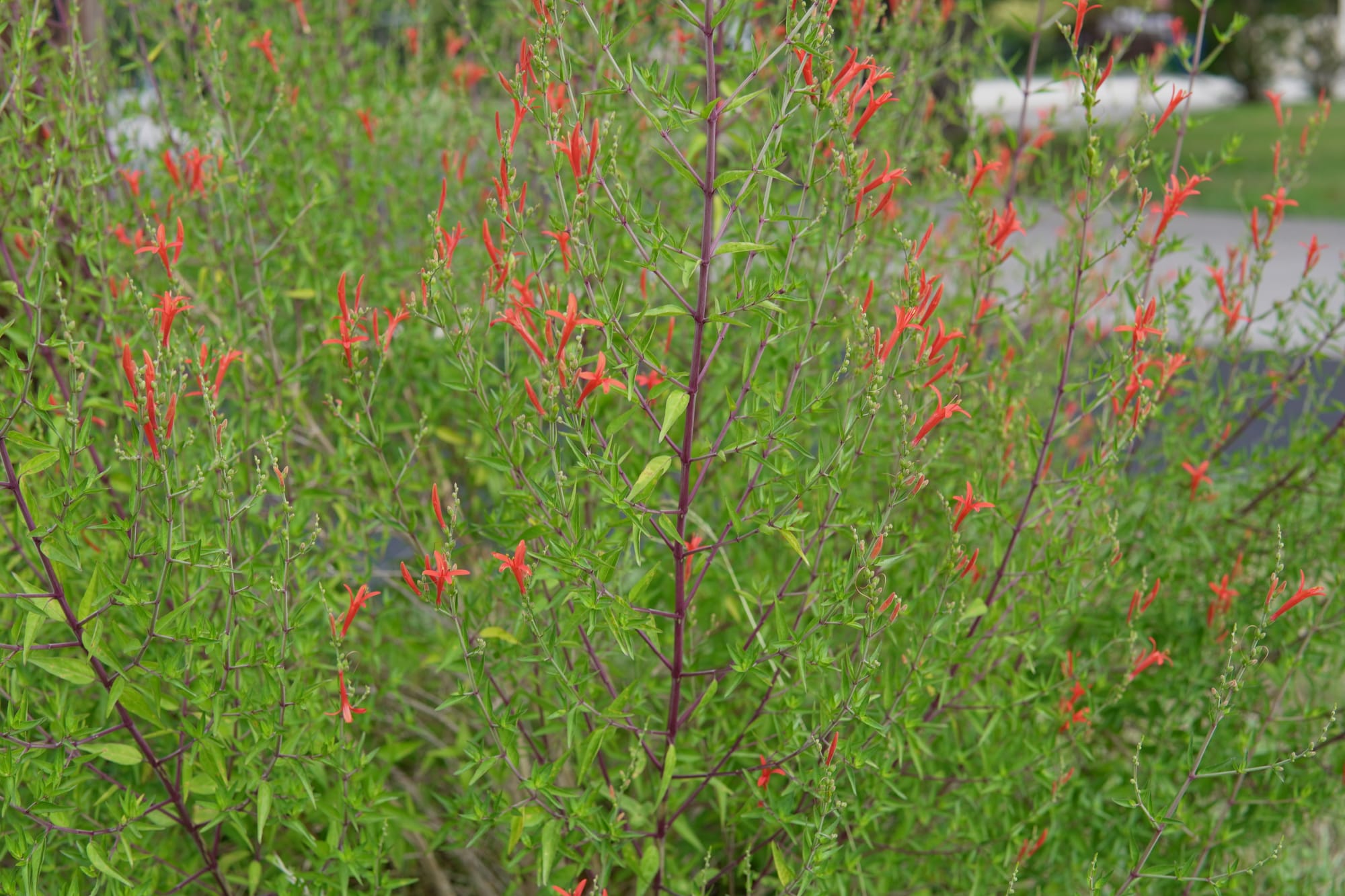
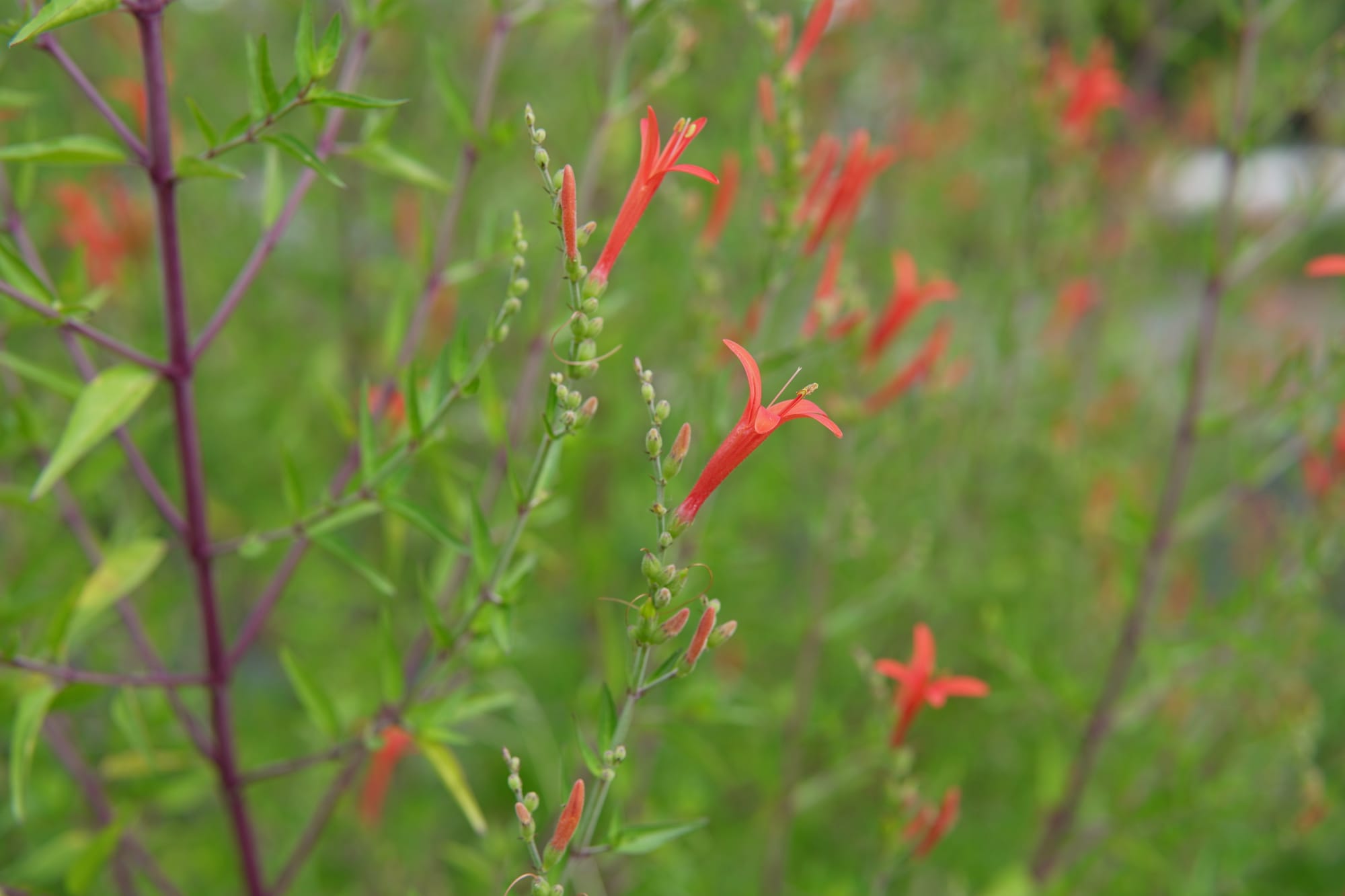
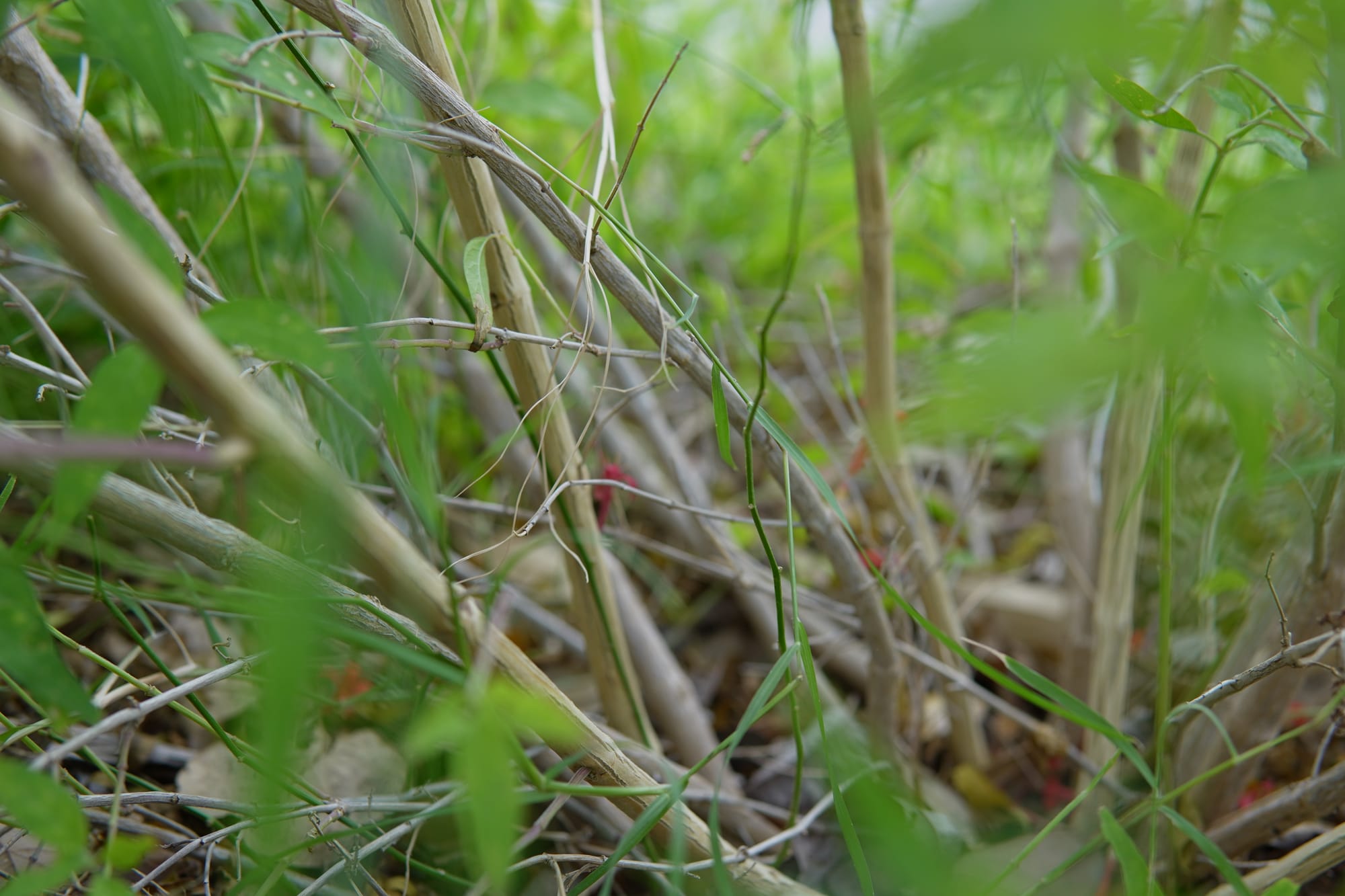
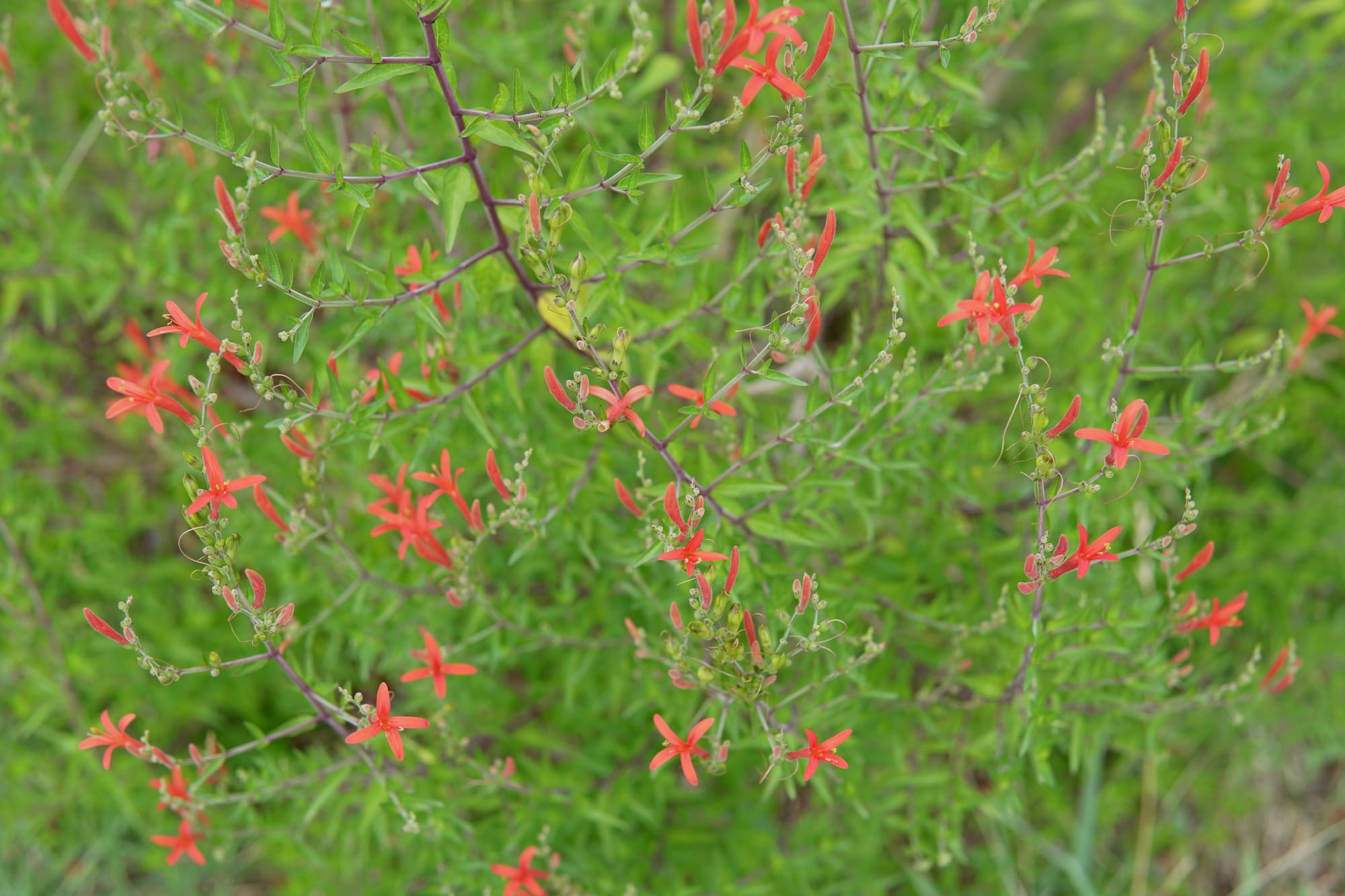
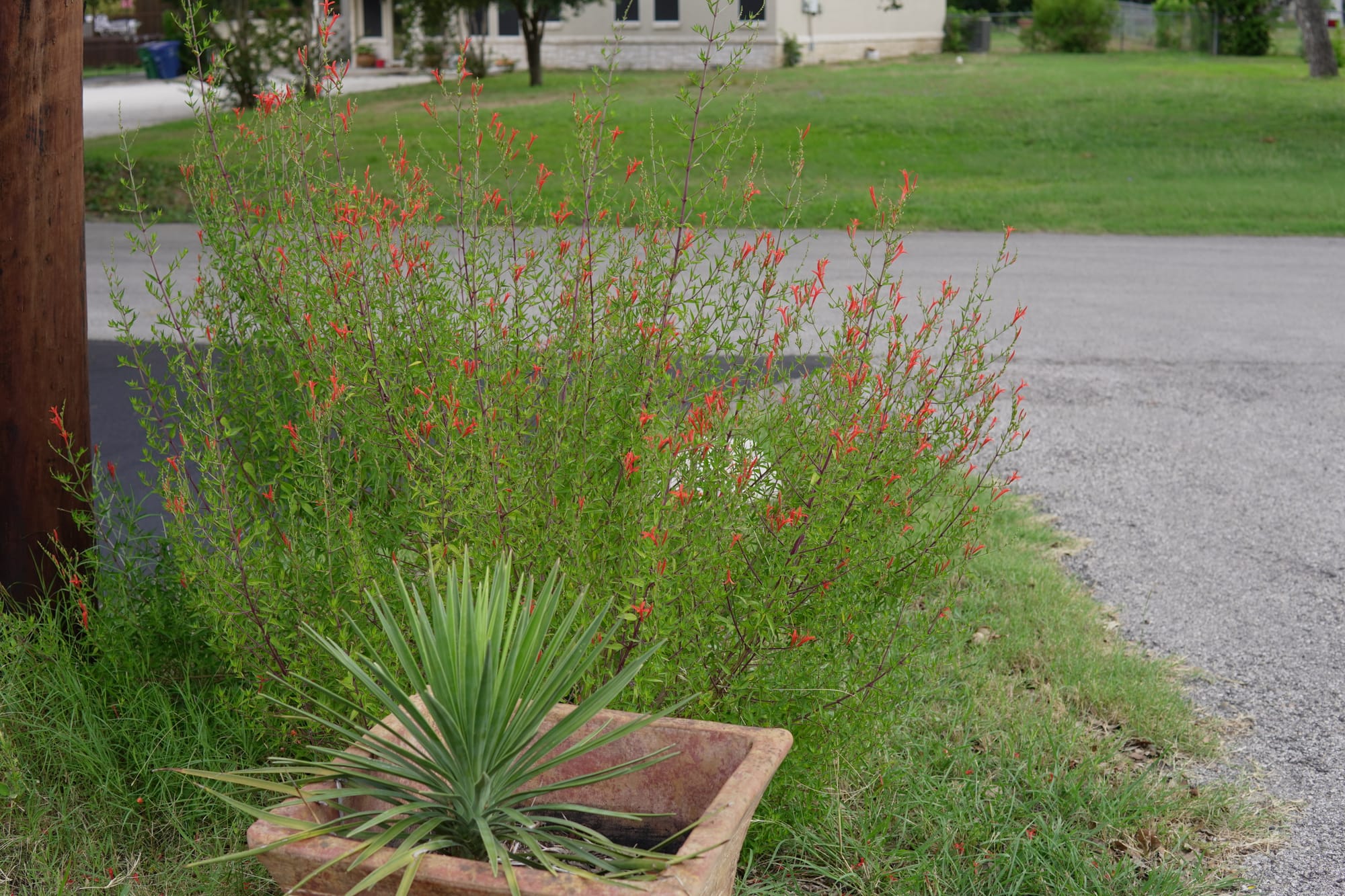
For Wildlife
- Nectar Source for Pollinators (of course!): Hummingbirds love the plant’s tubular flowers and green foliage. Having Flame Acanthus around means you'll enjoy some wildlife.
- Host Plant: Flame Acanthus is a host plant for the Texas Crescent Butterfly.
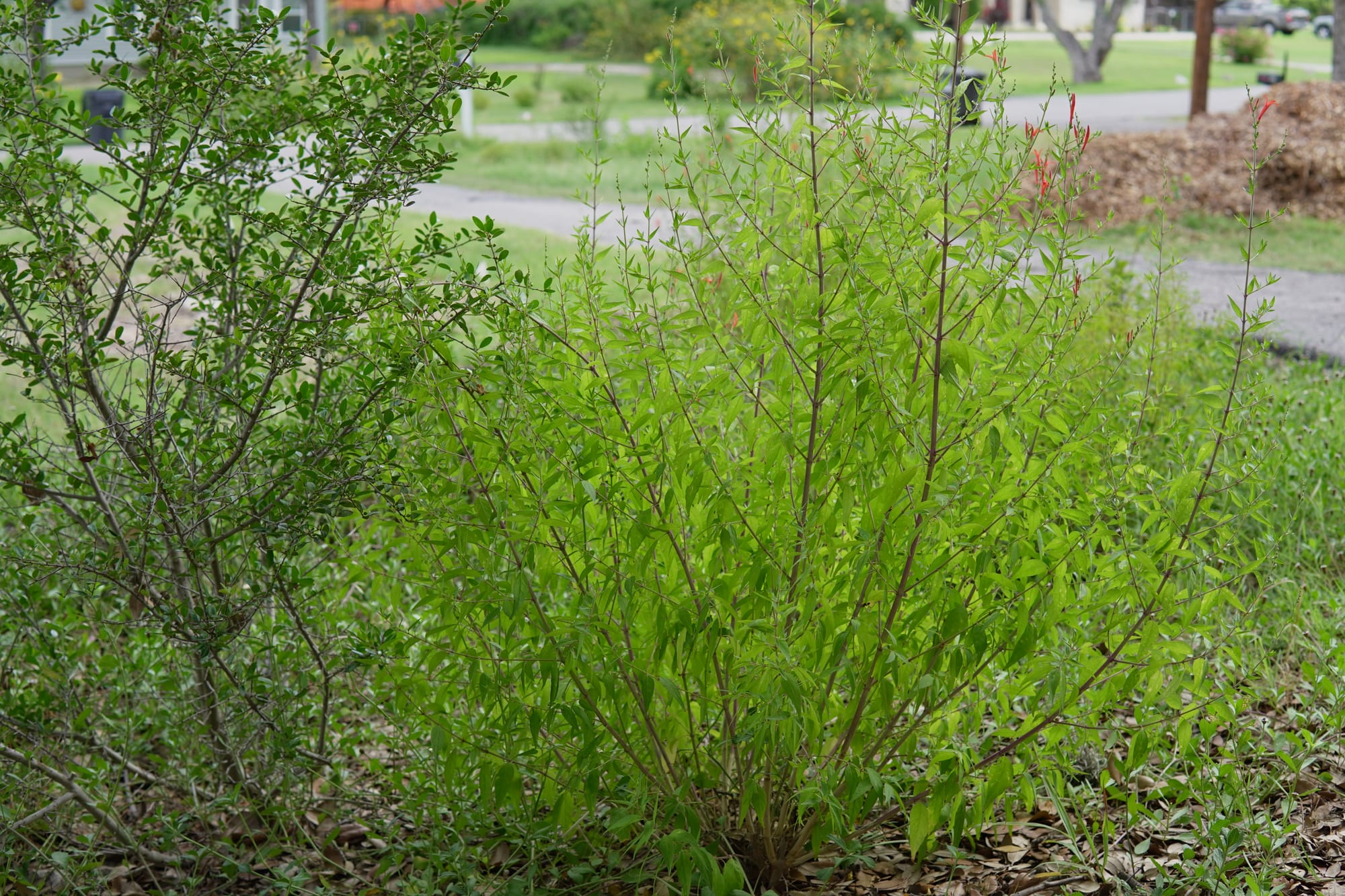
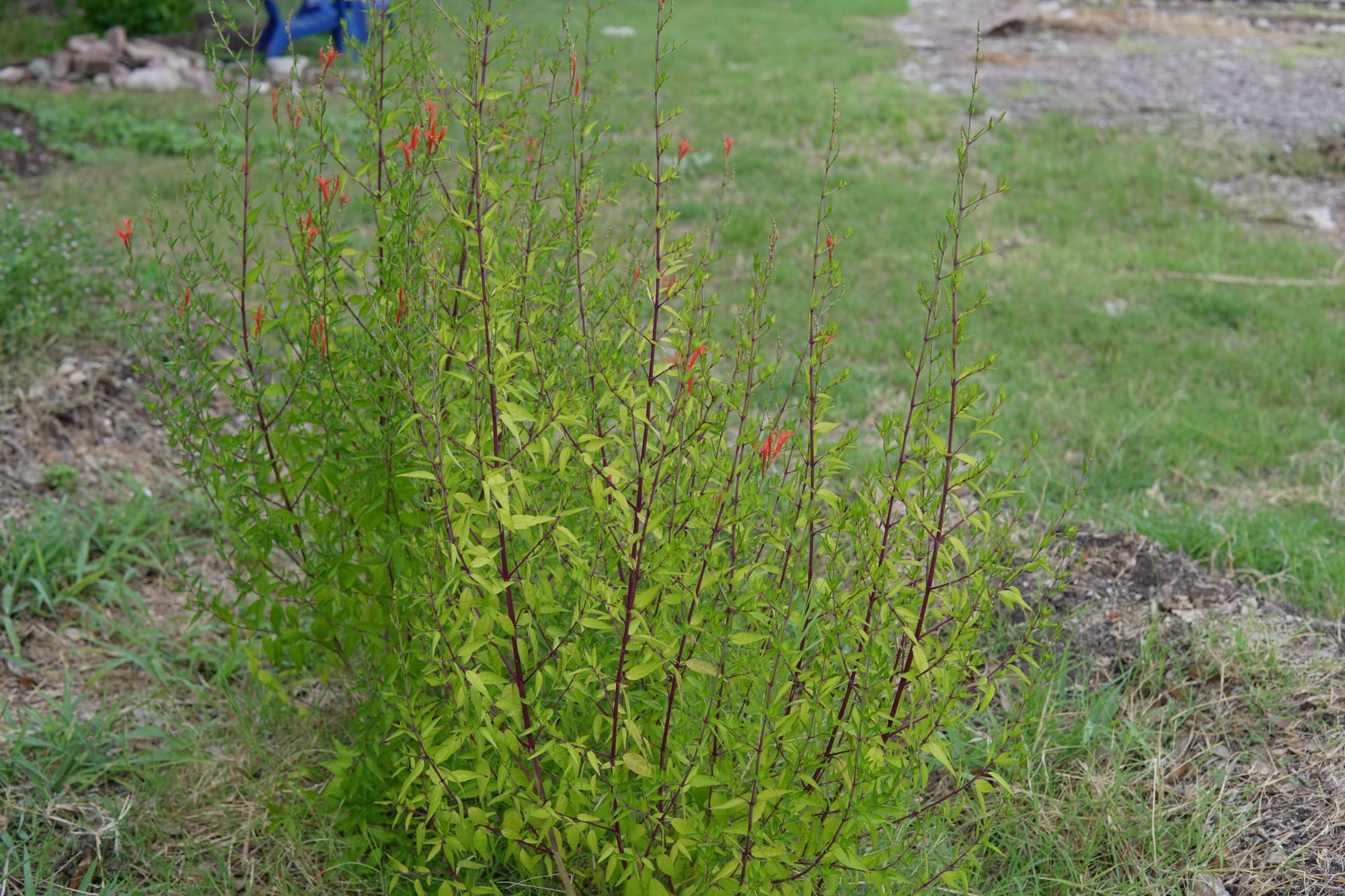
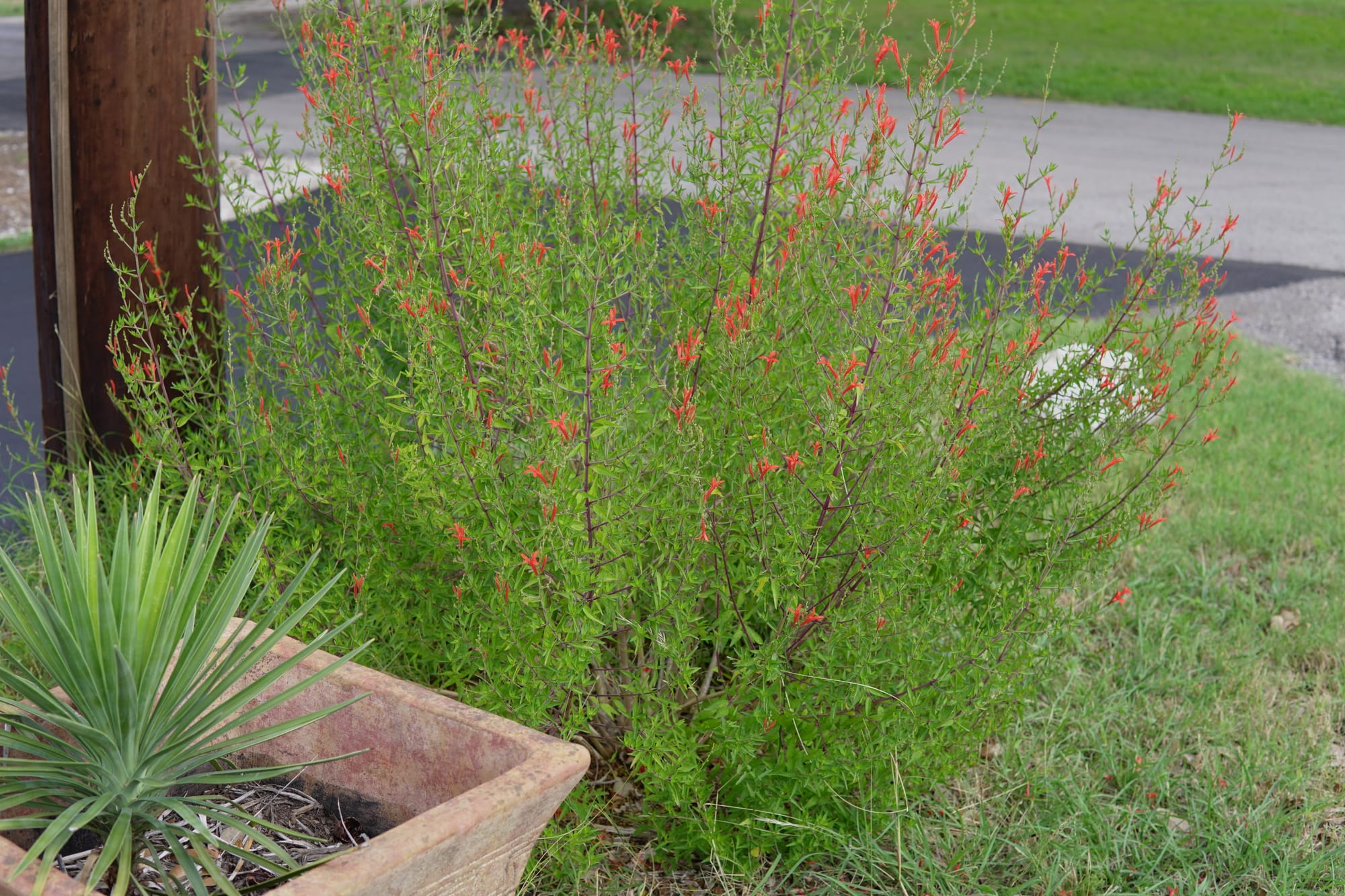
Our three originally planted Flame Acanthus in order from least to most sun. The left two Flame Acanthus plantings were also pruned over winter, the far right was not.
Planting and Care
Here are some of my tips on planting and caring for Flame Acanthus:
Location
Where is the best place to plant Flame Acanthus?
- Full Sunlight: Plant your Flame Acanthus in full sun. You can plant it under light shade, but it’ll produce fewer flowers. From my experience, the most bushy, profusely blooming Flame Acanthus are in (hot) direct sun.
- Drier Conditions: Flame Acanthus prefers drier conditions. I've planted it accordingly–hottest, driest areas of our property.
- Where You Don't Mind (Or Want!) Spread: Flame Acanthus will spread easily, so, if you're concerned about it spreading, don't plant it in an area where it needs to respect boundaries.
- In Pots: According to Native Texas Plants: Landscaping Region by Region, Flame Acanthus is a Texas native plant that can do quite well in a pot. I can't speak from direct experience, since I do enjoy it in the ground, but it feels worth mentioning. This might be because it can do quite well in dry conditions and might not mind drying out too much.
Care and Maintenance
- (Optional) Annual Pruning: You can prune back your Flame Acanthus in winter to promote more compact growth. This isn't necessary, however. If you'd like to keep the plant a little smaller and need it to remain in a tighter space, you might consider it.
- Transplanting: While I enjoy that the Flame Acanthus readily spreads on it's own, not everyone does! And that's fine! This will be your biggest point of maintenance with Flame Acanthus. Either plant it in an area where you don't mind it spreading out and starting a family, or, keep on top of the new plants that sprout up each spring. Or, a final option, enjoy and celebrate it's success! We dig them up to transplant or give them away to friends!
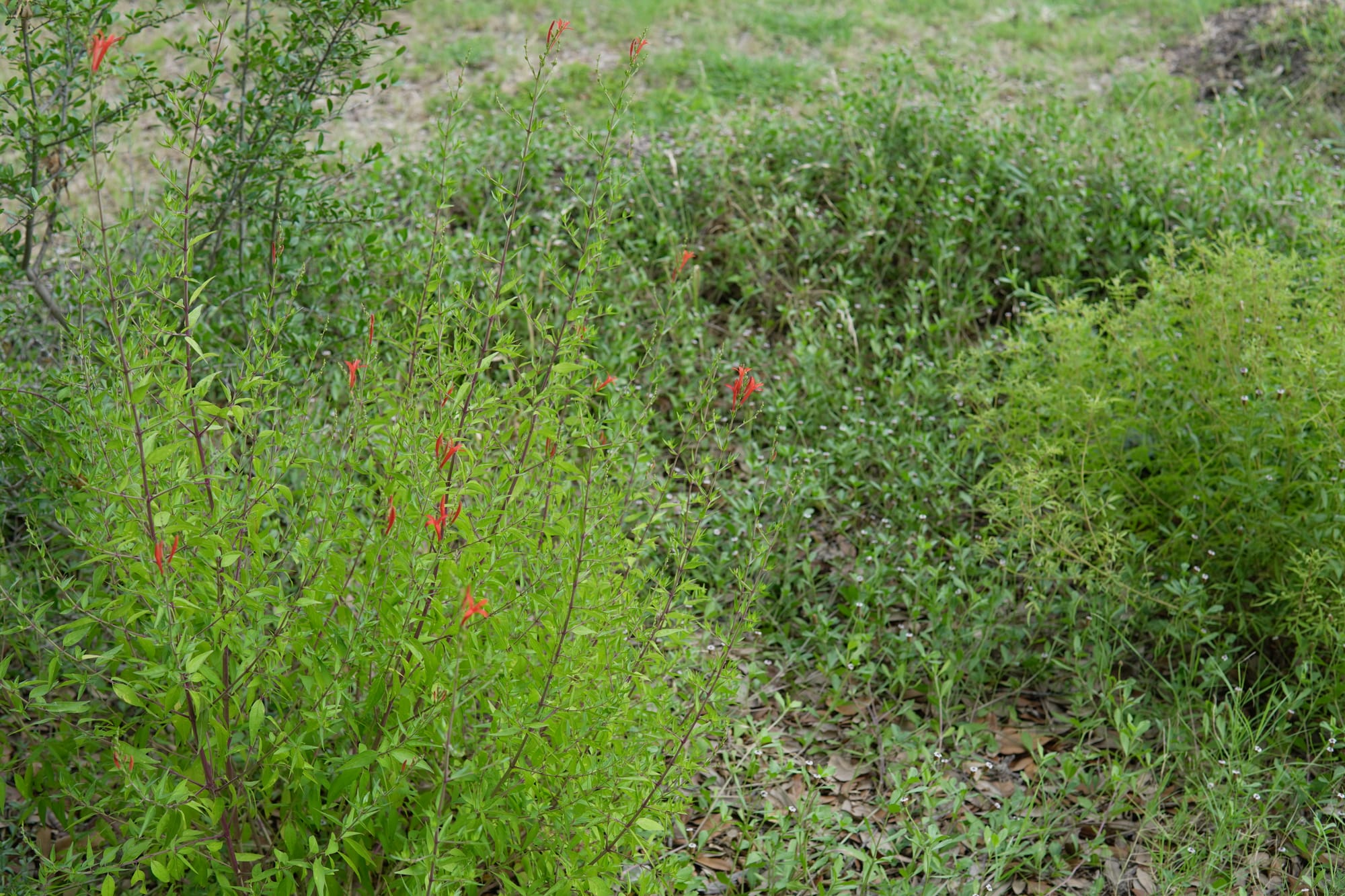
Companion Plants
Flame Acanthus can grow alongside other native plants from South Central Texas. These are some plant species to consider.
- Anacacho Orchid Tree
- Turk’s Cap
- Texas Lantana
- Agarita
- Pavonia
- Texas Sage
We've planted our Flame Acanthus with Frogfruit, Copper Canyon Daisy, and Yaupon Holly.
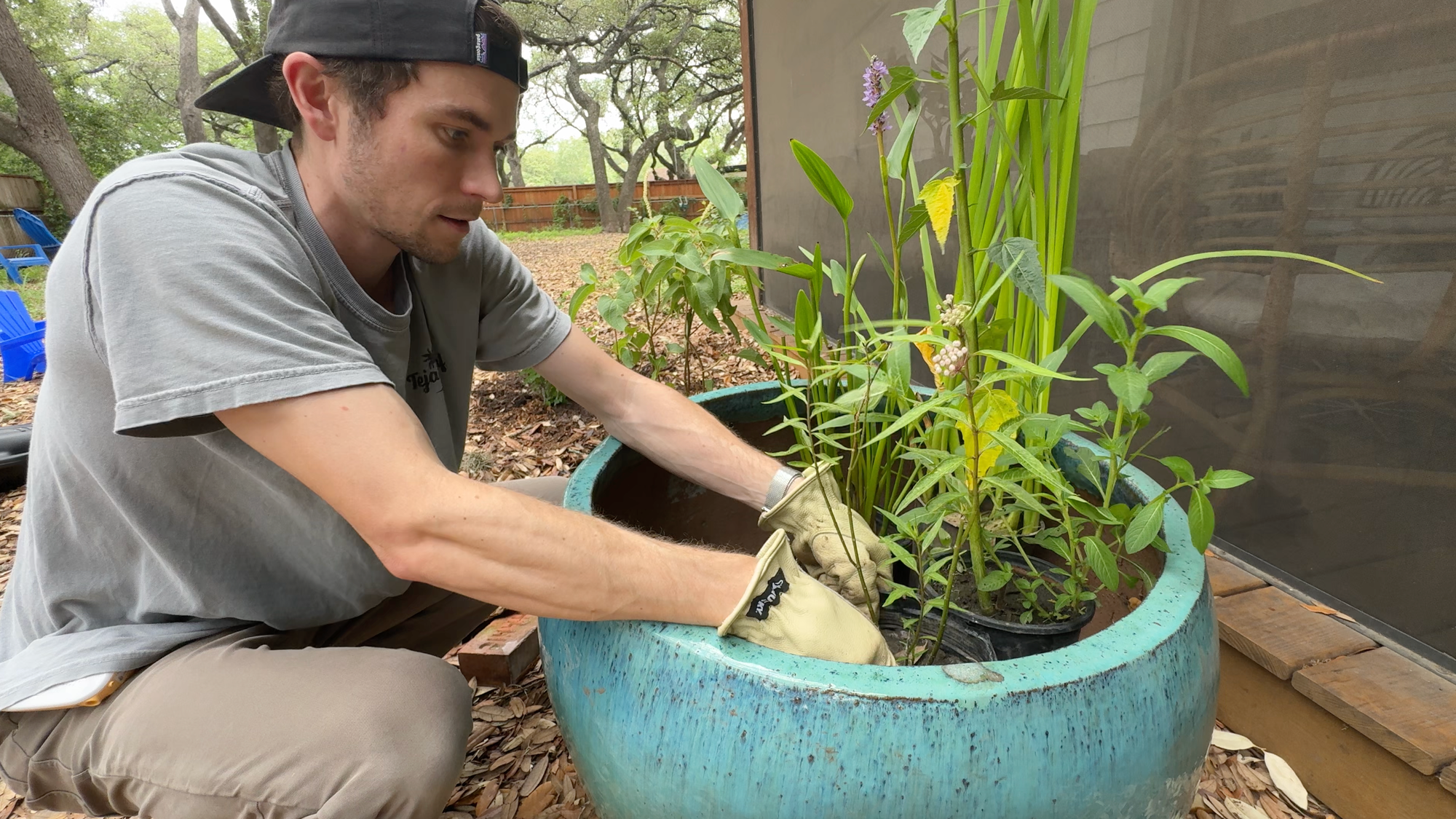
Stop Stressin', Start Planting 🌱
If you want help picking the right plants for your landscape, consider booking a Texas-sized Native Plant or Food Forest consult with me or, having me build a custom plant list for you based on your site and home landscape goals.
LEARN MORE >>>Seasons: What to Expect
Flame Acanthus typically blooms from June to September. Here’s what to expect throughout the year.
- Spring: Flame Acanthus' leaves arrive and new growth comes as the plant starts to bush out. Depending on the location of the planting, blooming starts during late spring.
- Summer: These plants steadily flower until mid to late summer after rain. The blooms correspond to the advent of hot weather.
- Fall: Flowers start to fade in fall, and you’ll be left with a bushy green shrub in the fall months.
- Winter: The plant will lose all it's leaves come first winter frost and look a bit twiggy. You can leave it be till next year's growth or prune after the danger of frost has passed.
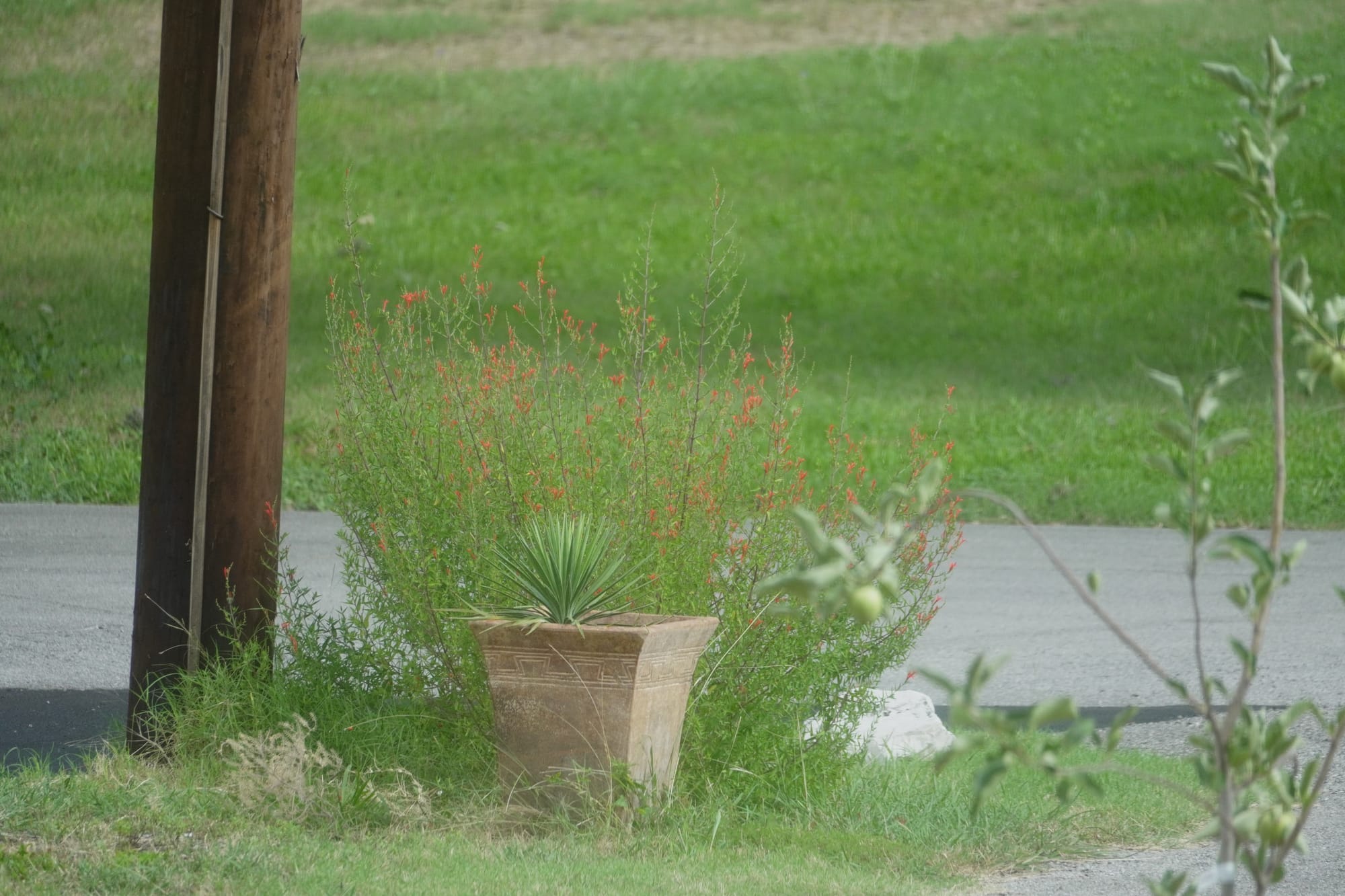
Propagation
Here's how to grow Flame Acanthus
- Seeds: Flame Acanthus produces plenty of seeds naturally. You can sow the seeds directly into the soil. However, I find there’s no need to do this since the seed capsules split and shoot seeds at a distance, and will fill your garden beds with time. Just be patient.
- Cuttings: You can propagate Flame Acanthus from softwood cuttings. Cut them during early summer or fall. Cut a four to six-inch section below the node, then remove leaves from the bottom half. Afterward, dip the cuttings in rooting hormone, plant them three inches apart, and give supplemental water. Flame Acanthus cuttings can root within three weeks.
- Transplanting: Transplant Flame Acanthus in fall or in early spring and cut back by 1/3. Make sure to give extra water during it's first year to establish.
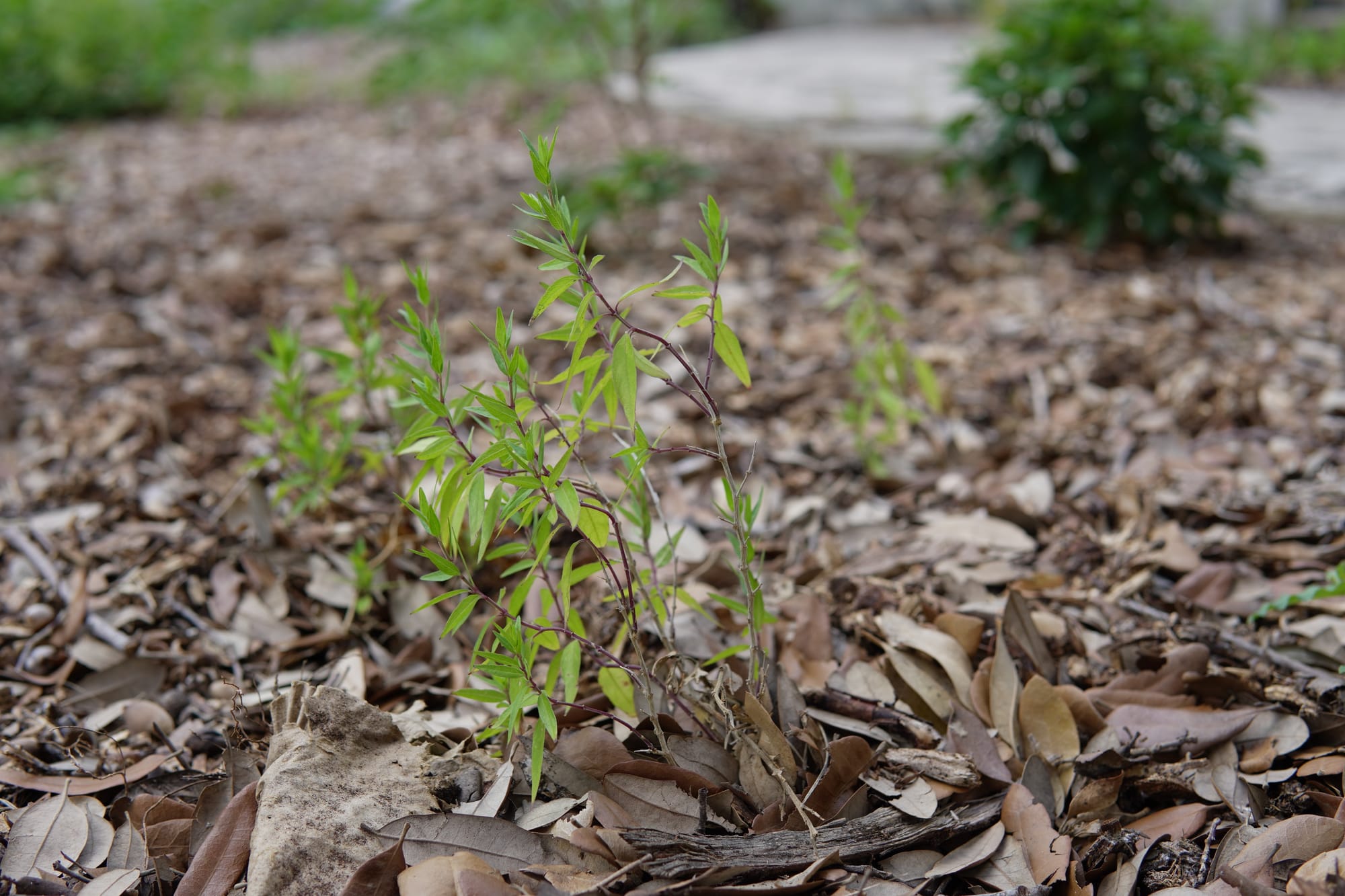
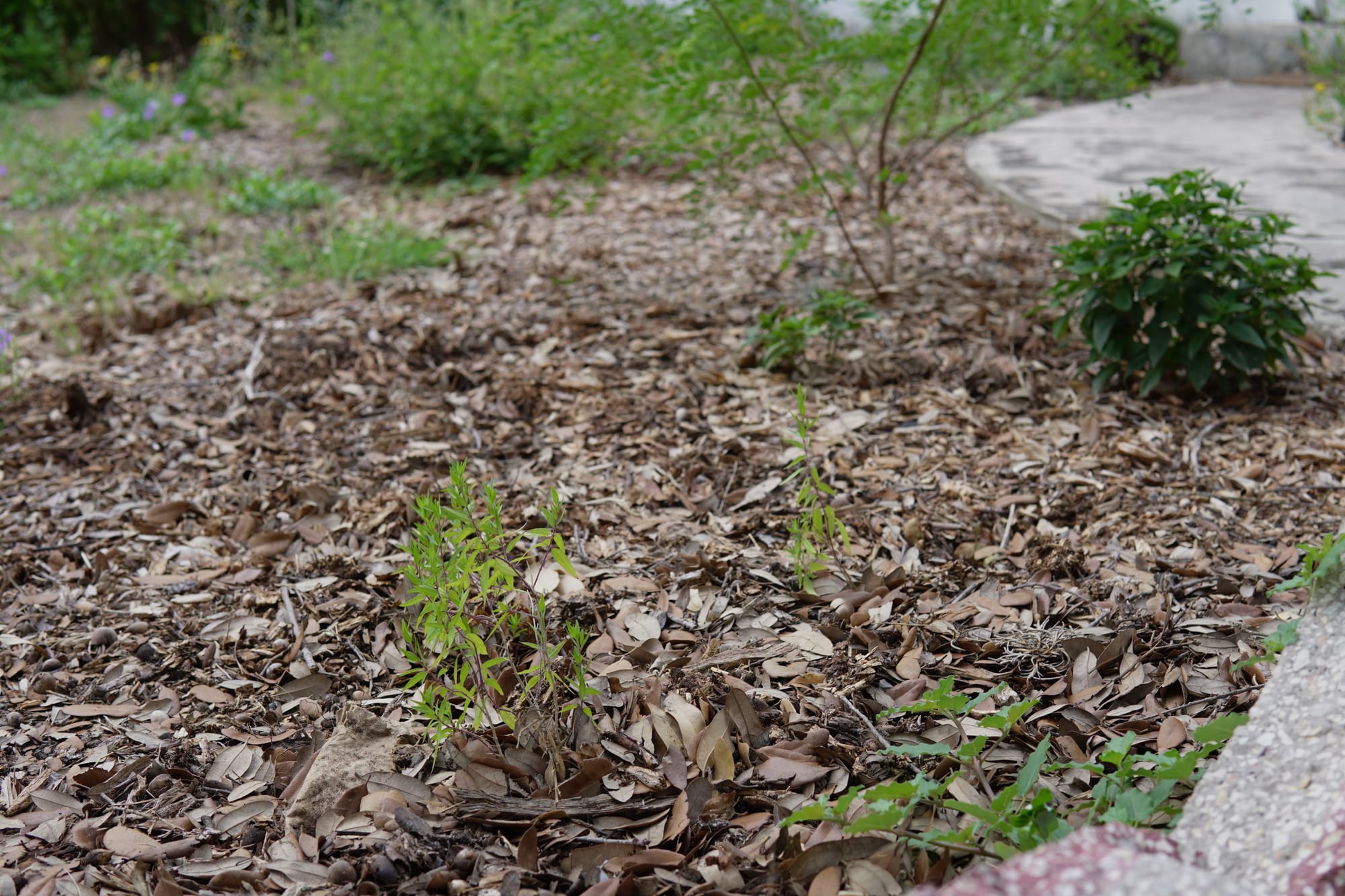
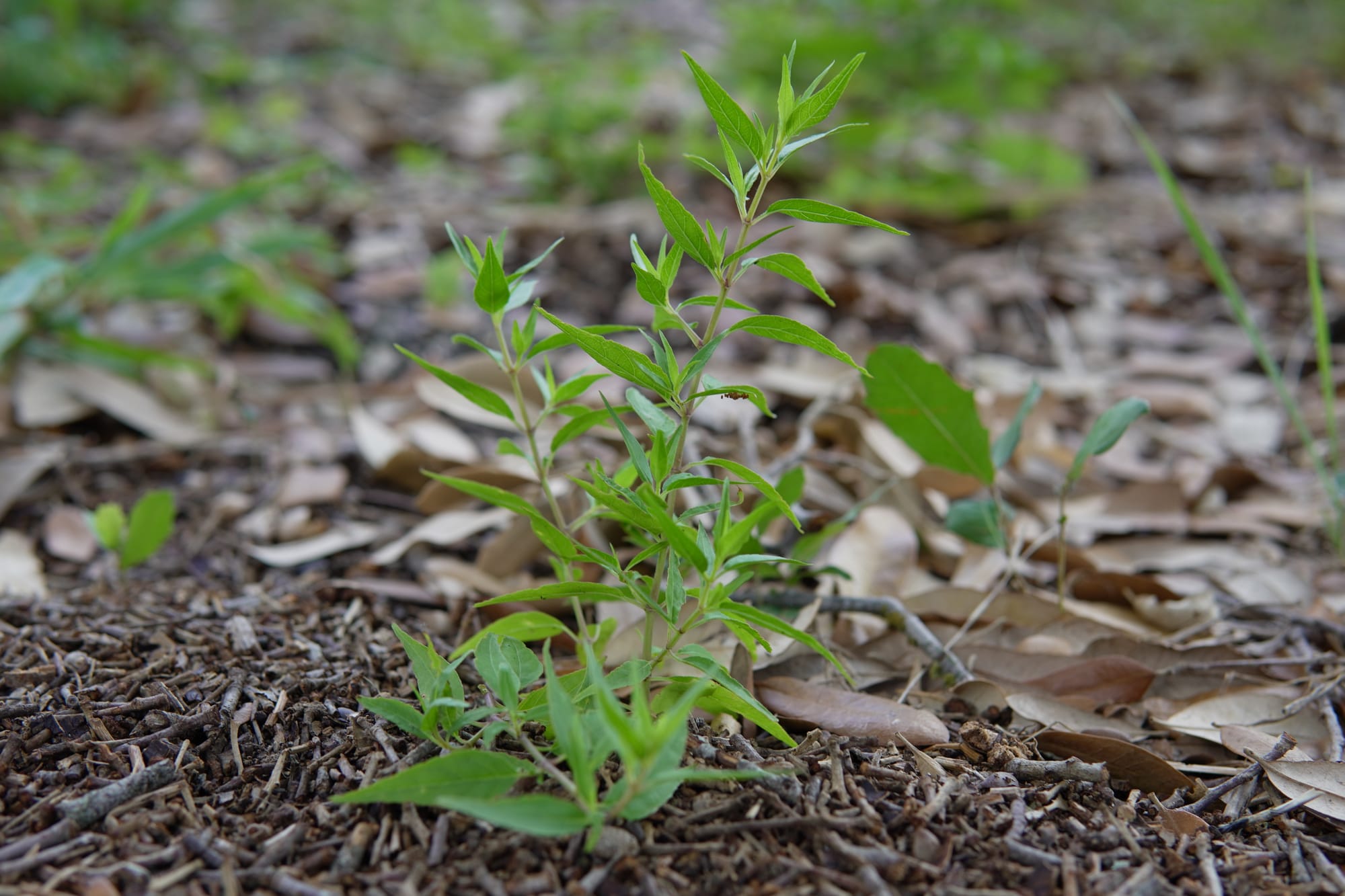
Three Flame Acanthus transplants in Year One (Left, Middle). Another Flame Acanthus sprout identified for transplant come Fall.
Sources
Along with my own experience working with the Flame Acanthus (or Hummingbird Bush) in my landscape and learning from my observations out in Texas' natural places, here are all the books and resources that I consulted in producing this page:
📚 Books
- How to Grow Native Plants of Texas and The Southwest by Jill Nokes
- Texas Wildcapes: Gardening for Wildlife by Noreen Damude and Kelly Conrad Bender
- Native Texas Plants: Landscaping Region by Region by Sally and Andy Wasowski
🌐 Websites
- (n.d.) Texas Tech University Plant Resources. https://www.depts.ttu.edu/plantresources/Pages/directories/landscape-info-sheets/herbaceous-info/Anisacanthus_quadrifidusvarwrightii.php
- (n.d.) City of Austin Website. https://www.austintexas.gov/department/grow-green/plant-guide/flame-acanthus
- (2023) Dallas County Master Gardener Association. https://dallascountymastergardeners.org/flame-acanthus/
- (n.d.). Anisacanthus quadrifidus var. wrightii. Lady Bird Johnson Wildflower Center. https://www.wildflower.org/plants/result.php?id_plant=balu
- (n.d.). Flame Acanthus – Anisacanthus quadrifidus wrightii. Garden Style San Antonio. https://www.gardenstylesanantonio.com/plants/flame-acanthus/
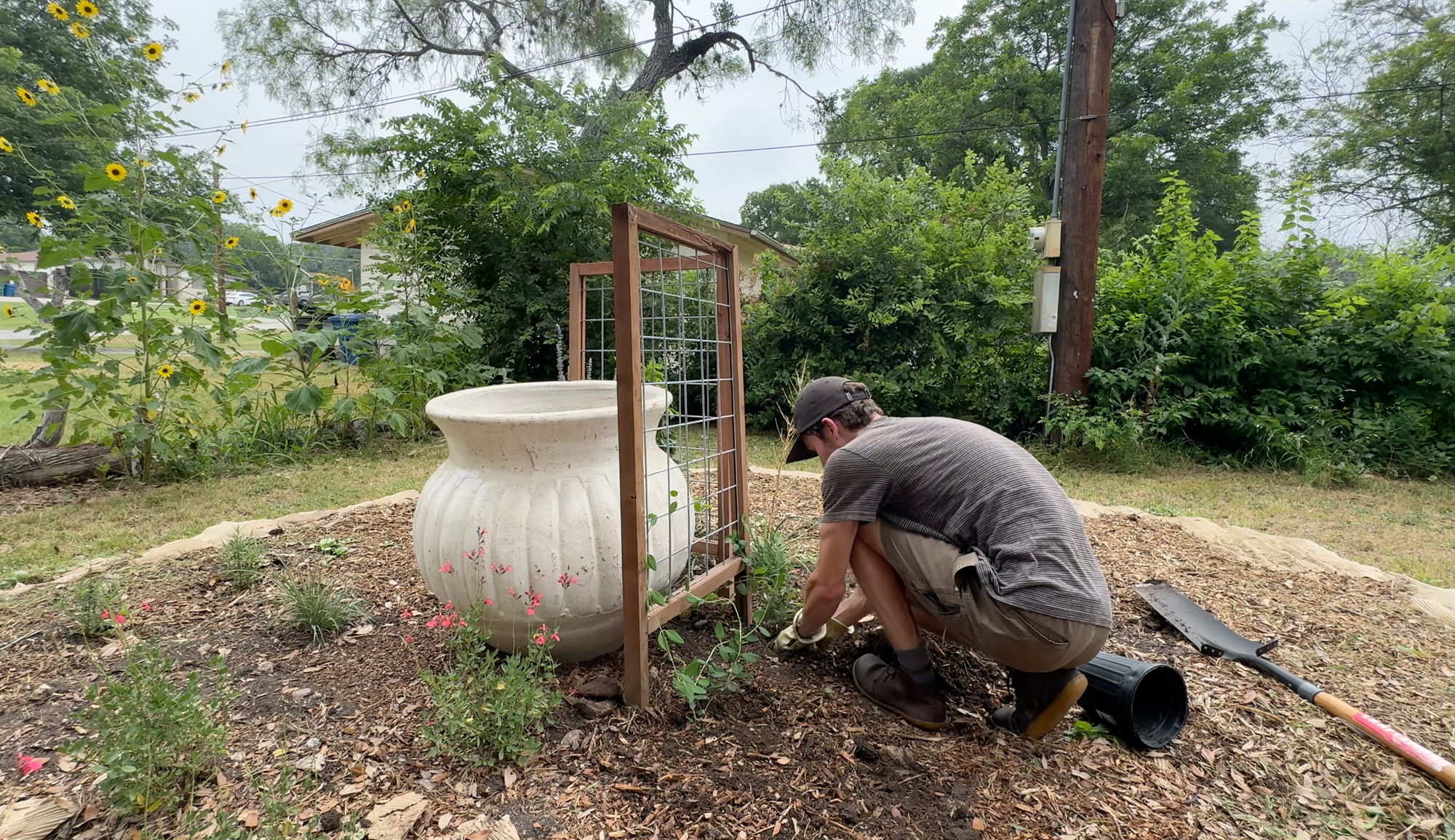
🤠 Book a Texas-Sized Consult
Stop stressing about what to plant and where. Save time and money by booking a Texas Native Plant consult with me (Cory Ames), or letting me build a custom plant list for you and your landscape. 🌱
LEARN MORE >>>
